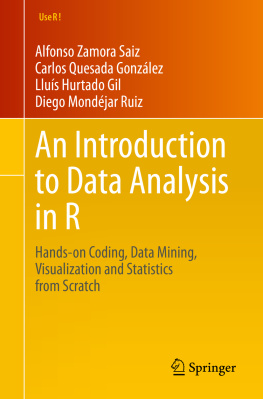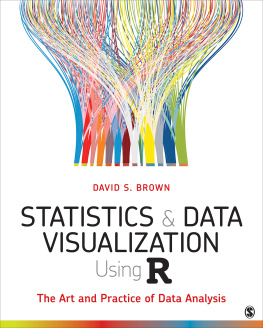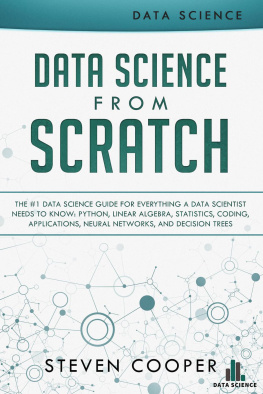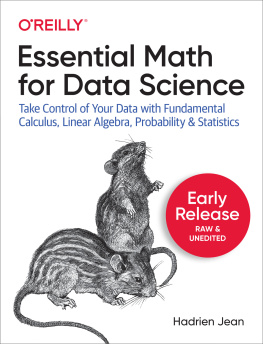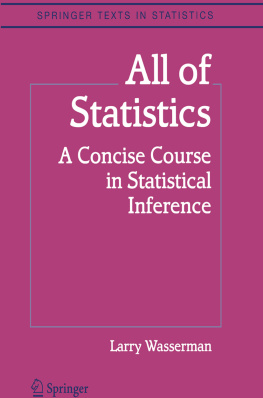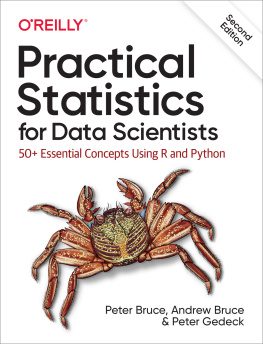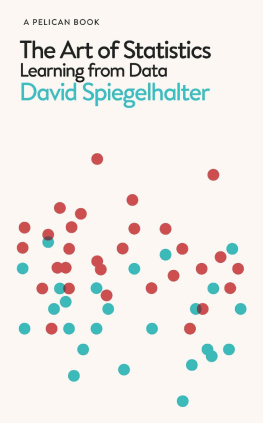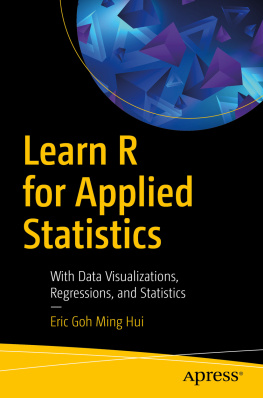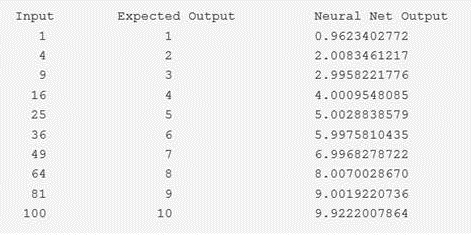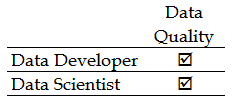James D. Miller [James D. Miller] - Statistics for Data Science
Here you can read online James D. Miller [James D. Miller] - Statistics for Data Science full text of the book (entire story) in english for free. Download pdf and epub, get meaning, cover and reviews about this ebook. year: 2017, publisher: Packt Publishing, genre: Computer. Description of the work, (preface) as well as reviews are available. Best literature library LitArk.com created for fans of good reading and offers a wide selection of genres:
Romance novel
Science fiction
Adventure
Detective
Science
History
Home and family
Prose
Art
Politics
Computer
Non-fiction
Religion
Business
Children
Humor
Choose a favorite category and find really read worthwhile books. Enjoy immersion in the world of imagination, feel the emotions of the characters or learn something new for yourself, make an fascinating discovery.
- Book:Statistics for Data Science
- Author:
- Publisher:Packt Publishing
- Genre:
- Year:2017
- Rating:5 / 5
- Favourites:Add to favourites
- Your mark:
Statistics for Data Science: summary, description and annotation
We offer to read an annotation, description, summary or preface (depends on what the author of the book "Statistics for Data Science" wrote himself). If you haven't found the necessary information about the book — write in the comments, we will try to find it.
Get your statistics basics right before diving into the world of data science
About This Book
- No need to take a degree in statistics, read this book and get a strong statistics base for data science and real-world programs;
- Implement statistics in data science tasks such as data cleaning, mining, and analysis
- Learn all about probability, statistics, numerical computations, and more with the help of R programs
Who This Book Is For
This book is intended for those developers who are willing to enter the field of data science and are looking for concise information of statistics with the help of insightful programs and simple explanation. Some basic hands on R will be useful.
What You Will Learn
- Analyze the transition from a data developer to a data scientist mindset
- Get acquainted with the R programs and the logic used for statistical computations
- Understand mathematical concepts such as variance, standard deviation, probability, matrix calculations, and more
- Learn to implement statistics in data science tasks such as data cleaning, mining, and analysis
- Learn the statistical techniques required to perform tasks such as linear regression, regularization, model assessment, boosting, SVMs, and working with neural networks
- Get comfortable with performing various statistical computations for data science programmatically
In Detail
Data science is an ever-evolving field, which is growing in popularity at an exponential rate. Data science includes techniques and theories extracted from the fields of statistics; computer science, and, most importantly, machine learning, databases, data visualization, and so on.
This book takes you through an entire journey of statistics, from knowing very little to becoming comfortable in using various statistical methods for data science tasks. It starts off with simple statistics and then move on to statistical methods that are used in data science algorithms. The R programs for statistical computation are clearly explained along with logic. You will come across various mathematical concepts, such as variance, standard deviation, probability, matrix calculations, and more. You will learn only what is required to implement statistics in data science tasks such as data cleaning, mining, and analysis. You will learn the statistical techniques required to perform tasks such as linear regression, regularization, model assessment, boosting, SVMs, and working with neural networks.
By the end of the book, you will be comfortable with performing various statistical computations for data science programmatically.
Style and approach
Step by step comprehensive guide with real world examples
Downloading the example code for this book. You can download the example code files for all Packt books you have purchased from your account at http://www.PacktPub.com. If you purchased this book elsewhere, you can visit http://www.PacktPub.com/support and register to have the code file.
James D. Miller [James D. Miller]: author's other books
Who wrote Statistics for Data Science? Find out the surname, the name of the author of the book and a list of all author's works by series.

![James D. Miller [James D. Miller] Statistics for Data Science](/uploads/posts/book/119637/thumbs/james-d-miller-james-d-miller-statistics-for.jpg)

